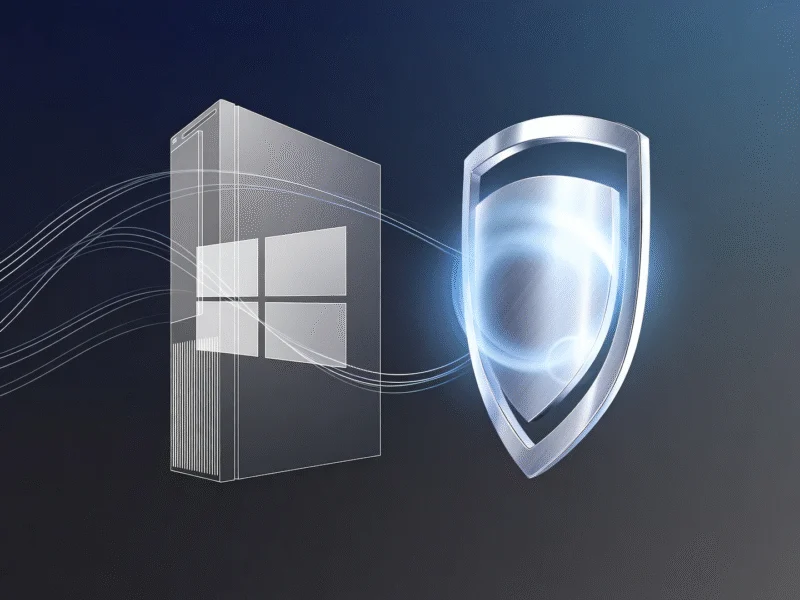TITLE: Windows 10 Microsoft Defender Support: What You Need to Know About ESU Period
META_DESCRIPTION: Microsoft clarifies Microsoft Defender support for Windows 10 during Extended Security Updates. Learn about detection capabilities, security updates, and upgrade recommendations.
EXCERPT: Microsoft has officially clarified Microsoft Defender’s ongoing support for Windows 10 during the Extended Security Updates period. While detection and protection continue, users should understand the limitations and consider their security options moving forward.
Windows 10 Enters New Phase with Extended Security Updates
As of today, Windows 10 has officially moved beyond its mainstream support phase, marking a significant transition for one of Microsoft’s most widely used operating systems. While the operating system will no longer receive feature updates or non-security patches, Microsoft has established the Extended Security Updates (ESU) program to provide continued protection for organizations and users who need more time to transition. This program ensures that critical security updates will remain available for enrolled devices, maintaining a baseline of security while users plan their upgrade path to newer systems.
Microsoft Defender Commitment During ESU Period
In a recent clarification posted on the Microsoft Defender for Endpoint Blog, the company has provided clear guidance about what Windows 10 users can expect from their built-in security solution. Microsoft Defender will continue to provide detection and protection capabilities throughout the ESU period, ensuring that devices remain protected against emerging threats. However, Microsoft emphasizes that security solutions running on what they term “legacy systems” face inherent limitations in receiving all new security features and capabilities.
Understanding Defender’s Detection and Protection Capabilities
According to Microsoft’s official statement, Defender will maintain its core antivirus software functionality on Windows 10 devices, though with some important caveats. The company notes that while detection and protection will continue “to the extent possible,” users should understand that legacy operating systems cannot support the full range of modern security features. This aligns with Microsoft’s broader supported operating systems requirements for Defender for Endpoint, which outlines the specific capabilities available across different Windows versions.
Security Intelligence Updates Through 2028
For users relying on the built-in Microsoft Defender Antivirus protection without the full Defender suite, Microsoft has committed to providing security intelligence updates through October 2028. This ensures that the signature-based detection components will continue to receive updates identifying new threats. However, Microsoft cautions that standalone antivirus protection represents only one layer of defense and doesn’t constitute a comprehensive security posture without additional detection and response capabilities deployed across the entire digital environment.
Recommended Actions for Windows 10 Users
Microsoft strongly recommends that organizations and users take proactive steps to maintain their security posture. The primary options include enrolling in the Extended Security Updates program for continued Windows 10 support or upgrading to Windows 11 to access the latest security features and capabilities. The company emphasizes that while Defender will continue functioning on Windows 10, the most robust protection requires modern hardware and software platforms that can support advanced security technologies that simply cannot be backported to older operating systems.
Broader Security Context and Considerations
The transition of Windows 10 to extended support comes amid broader security challenges across the technology landscape. Recent developments, including export control changes affecting technology components and critical vulnerabilities in popular software, highlight the importance of maintaining updated security solutions. Meanwhile, advancements in AI security technologies and sustainable technology infrastructure demonstrate the rapid evolution occurring outside the Windows 10 ecosystem that users may be missing by remaining on the legacy platform.
Planning Your Security Strategy
Organizations still running Windows 10 should develop a comprehensive transition plan that addresses both immediate security needs and long-term technology strategy. While Microsoft has demonstrated its commitment to supporting customers through this transition, the reality remains that Microsoft is increasingly focusing its innovation and security development on Windows 11 and future platforms. The continued support for Windows 10 through ESU provides valuable breathing room, but shouldn’t be viewed as a permanent solution for maintaining enterprise security standards in an increasingly sophisticated threat landscape.



